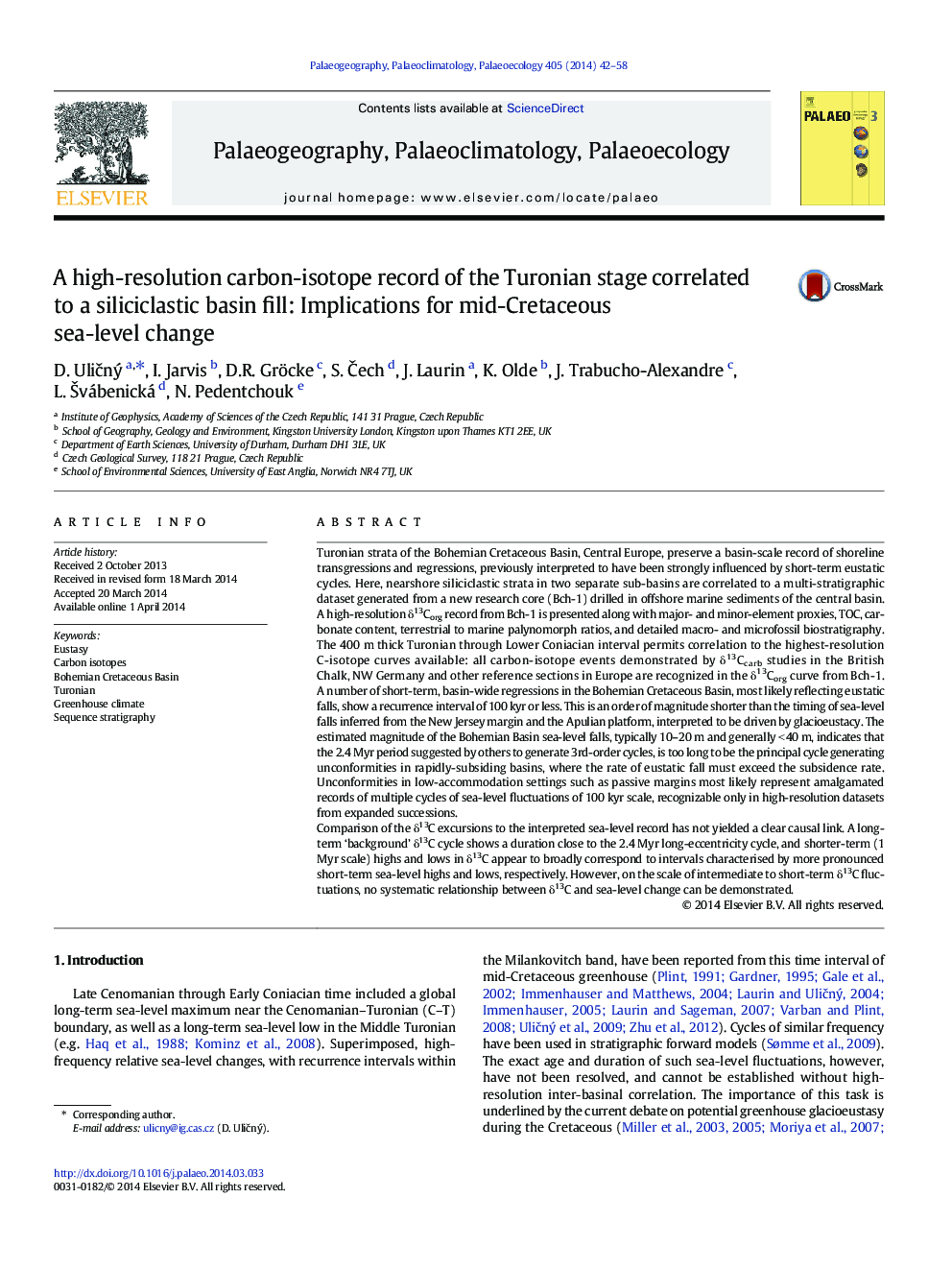| کد مقاله | کد نشریه | سال انتشار | مقاله انگلیسی | نسخه تمام متن |
|---|---|---|---|---|
| 4466230 | 1622185 | 2014 | 17 صفحه PDF | دانلود رایگان |
• Transgressive–regressive cycles correlated to a high-resolution δ13Corg record.
• Sea-level changes related to Milankovitch time scales
• Long-term ‘background’ δ13C cycle close to 2.4 Myr long-eccentricity cycle
• No systematic relationship between short-term δ13C and sea-level change
Turonian strata of the Bohemian Cretaceous Basin, Central Europe, preserve a basin-scale record of shoreline transgressions and regressions, previously interpreted to have been strongly influenced by short-term eustatic cycles. Here, nearshore siliciclastic strata in two separate sub-basins are correlated to a multi-stratigraphic dataset generated from a new research core (Bch-1) drilled in offshore marine sediments of the central basin. A high-resolution δ13Corg record from Bch-1 is presented along with major- and minor-element proxies, TOC, carbonate content, terrestrial to marine palynomorph ratios, and detailed macro- and microfossil biostratigraphy. The 400 m thick Turonian through Lower Coniacian interval permits correlation to the highest-resolution C-isotope curves available: all carbon-isotope events demonstrated by δ13Ccarb studies in the British Chalk, NW Germany and other reference sections in Europe are recognized in the δ13Corg curve from Bch-1.A number of short-term, basin-wide regressions in the Bohemian Cretaceous Basin, most likely reflecting eustatic falls, show a recurrence interval of 100 kyr or less. This is an order of magnitude shorter than the timing of sea-level falls inferred from the New Jersey margin and the Apulian platform, interpreted to be driven by glacioeustacy. The estimated magnitude of the Bohemian Basin sea-level falls, typically 10–20 m and generally < 40 m, indicates that the 2.4 Myr period suggested by others to generate 3rd-order cycles, is too long to be the principal cycle generating unconformities in rapidly-subsiding basins, where the rate of eustatic fall must exceed the subsidence rate. Unconformities in low-accommodation settings such as passive margins most likely represent amalgamated records of multiple cycles of sea-level fluctuations of 100 kyr scale, recognizable only in high-resolution datasets from expanded successions.Comparison of the δ13C excursions to the interpreted sea-level record has not yielded a clear causal link. A long-term ‘background’ δ13C cycle shows a duration close to the 2.4 Myr long-eccentricity cycle, and shorter-term (1 Myr scale) highs and lows in δ13C appear to broadly correspond to intervals characterised by more pronounced short-term sea-level highs and lows, respectively. However, on the scale of intermediate to short-term δ13C fluctuations, no systematic relationship between δ13C and sea-level change can be demonstrated.
Journal: Palaeogeography, Palaeoclimatology, Palaeoecology - Volume 405, 1 July 2014, Pages 42–58
